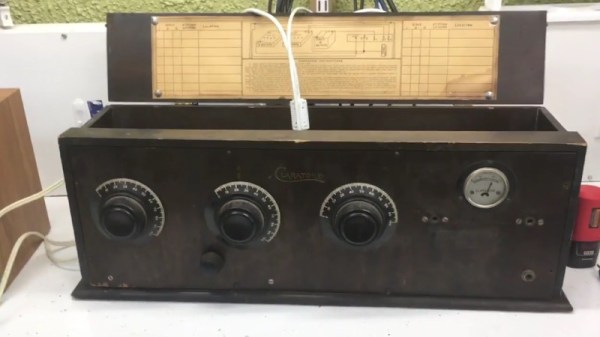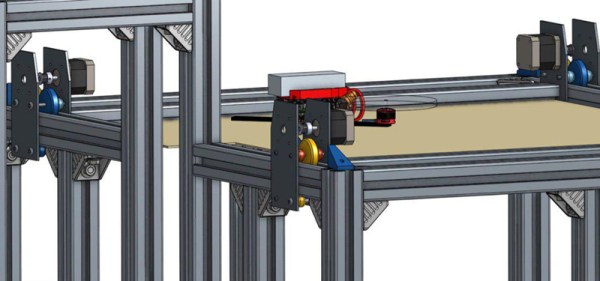In the past we’ve mentioned how there are different schools of thought in terms of how to bring a vintage piece of hardware into the 21st century. You can go down the preservationist’s route, carefully grafting the original components with more modern ones, or you can take the nuclear option and blow all that dusty old gear out of the water. [Derek Traxler] clearly decided to go with the latter option on his recent conversion of 1920’s era Claratone tube radio to an Internet radio and podcast player. Not only is there little left of the original device beyond its knobs and wooden case, but he’s even managed to cram a Windows 10 computer into the base for good measure.
 The core of the radio is a LattePanda, an extremely powerful Intel single board computer. It’s running Windows, and loads up a list of Internet radio streams and podcasts to play from a USB thumb drive that’s built into an old vacuum tube. The LattePanda uses its built-in Arduino to interface with the radio’s original front panel knobs, which now are used to switch between streams. A particularly neat effect is the static and cross-talk that’s artificially added when switching “stations”, making it sound like you’re really dialing in a station rather than just selecting between digital files.
The core of the radio is a LattePanda, an extremely powerful Intel single board computer. It’s running Windows, and loads up a list of Internet radio streams and podcasts to play from a USB thumb drive that’s built into an old vacuum tube. The LattePanda uses its built-in Arduino to interface with the radio’s original front panel knobs, which now are used to switch between streams. A particularly neat effect is the static and cross-talk that’s artificially added when switching “stations”, making it sound like you’re really dialing in a station rather than just selecting between digital files.
On the audio side, the LattePanda is connected to a SX400 amplifier, which in turn drives the external speakers. While [Derek] mentions it isn’t quite perfected, a MSGEQ7 graphic equalizer chip is used to control LEDs mounted inside the original radio’s vacuum tubes. In the video after the break, you can see the tubes flashing madly along with the music, giving an interactive effect to the final product. Unfortunately it seems you can only see the tubes when the radio has its “hood” up, though.
If this egregious lack of historical preservation has brought a tear to your eye, never fear. We’ve covered some proper restoration work on vintage audio gear which may level you out.







 Hamilton soon moved on to the SAGE program, writing software which would monitor radar data for incoming Russian bombers. Her work on SAGE put Margaret in the perfect position to jump to the new Apollo navigation software team.
Hamilton soon moved on to the SAGE program, writing software which would monitor radar data for incoming Russian bombers. Her work on SAGE put Margaret in the perfect position to jump to the new Apollo navigation software team.










